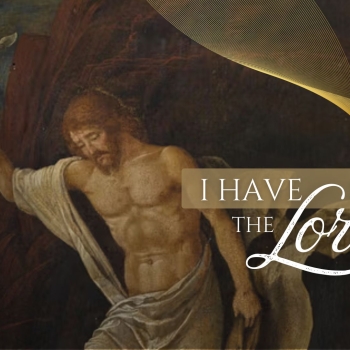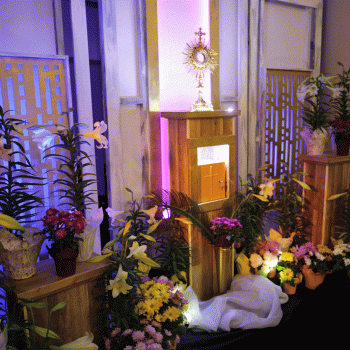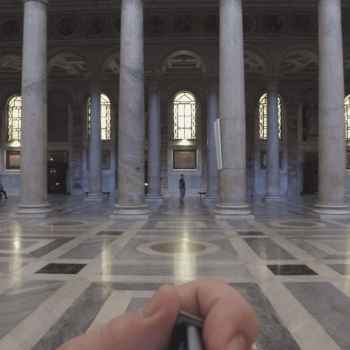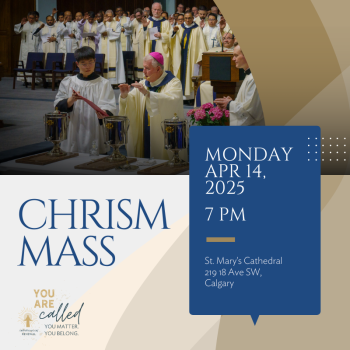The term "Holy Triduum" (often spelled with a capital "H") refers to a sacred three-day period in the Christian liturgical calendar, specifically the three days that encompass the Passion, Death, and Resurrection of Jesus Christ. It is the culmination of Lent and the most significant time in the Christian year for many denominations, particularly Roman Catholics, Anglicans, and Lutherans. The word "Triduum" comes from Latin, meaning "three days" (tri = three, dies = days).
Historical Background
The Holy Triduum has its roots in early Christian practices that commemorated the events of Jesus’ final days as described in the New Testament. By the 4th century, with the legalization of Christianity under Emperor Constantine and the development of formalized liturgies, these observances became more structured. The Triduum emerged as a distinct celebration, tying together three key moments:
- Maundy Thursday - commemorating the Last Supper and Jesus washing the disciples' feet.
- Good Friday - marking the Crucifixion and Death of Jesus.
- Holy Saturday - a day of waiting and preparation for the Resurrection, culminating in the Easter Vigil.
Historically, these events were not always celebrated as a unified "Triduum." Early Christians focused on Easter (Pascha) as the central feast, with Good Friday and Holy Saturday gradually gaining prominence. By the Middle Ages, the Roman Rite formalized the Triduum as a three-day liturgical unit, a practice that was further refined during the Council of Trent (16th century) and later in the 20th century with reforms like those of Pope Pius XII in 1955, which restored the Easter Vigil to its nighttime prominence.
Meaning of the Holy Triduum
The Holy Triduum is considered a single, continuous celebration rather than three separate days. It begins with the evening Mass of the Lord’s Supper on Maundy Thursday and concludes with Easter Sunday evening (though technically, the Triduum proper ends with the Easter Vigil on Saturday night). Each day has its own distinct focus:
- Maundy Thursday
- Meaning: Named from the Latin "mandatum" (commandment), it recalls Jesus’ new commandment to "love one another as I have loved you" (John 13:34). The washing of feet symbolizes humility and service, while the institution of the Eucharist at the Last Supper is central to Christian worship.
- Ritual: The Mass ends with the stripping of the altar, symbolizing Jesus’ abandonment, and the Eucharist is moved to an "altar of repose" for adoration.
- Good Friday
- Meaning: A somber day focused on the suffering and sacrificial death of Jesus on the cross, seen as the atonement for humanity’s sins. It’s a day of penance, fasting, and reflection.
- Ritual: No Mass is celebrated (unique in the year). Instead, services include the reading of the Passion, veneration of the cross, and distribution of pre-consecrated Communion.
- Holy Saturday (and the Easter Vigil)
- Meaning: A day of silence and anticipation, representing Jesus in the tomb. The Easter Vigil, held after nightfall, celebrates the Resurrection, marking the transition from death to life and the triumph of light over darkness.
- Ritual: The Vigil includes the lighting of the Paschal candle, the Exsultet (Easter Proclamation), baptisms, and the first Easter Mass. It’s a joyous shift from mourning to celebration.
Theological Significance
The Triduum encapsulates the Paschal Mystery—the core of Christian belief: Christ’s suffering, death, burial, and resurrection. It’s a time for believers to enter into these mysteries through liturgy, prayer, and fasting, reflecting on salvation and renewal. The three days are not merely historical remembrances but a living participation in the events that define Christian faith.
In 2025, with the current date being April 13, the Holy Triduum will occur later this month, as Easter Sunday is calculated as the first Sunday after the first full moon of spring (April 20 in 2025), placing the Triduum from April 17 (Maundy Thursday) to April 19 (Easter Vigil).






